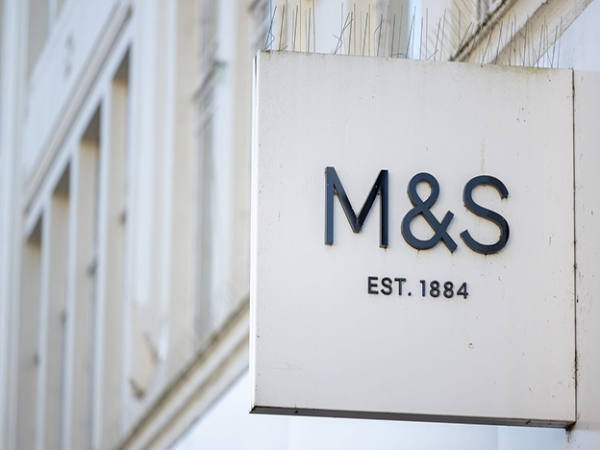In our last article, we looked at a selection of smaller UK-listed defence businesses. These companies' narrower operating bases have tended to create more volatile share prices. For more stability, investors might prefer the UK’s larger defence stocks. The pool is small, and shrinking following takeovers at Ultra (ULE) and Meggitt (MGGT) – there are today barely half-a-dozen options. The bulk of investible value remains in the US, where the market value of some individual defence businesses are worth a multiple of the entire listed UK defence sector. We will look at US stocks in our final article on this subject.
In the UK, we have a mix of defence pure plays, those that have a defence arm, and those with a tangential connection to defence. Let's begin with the last of these three categories: in this group are Darktrace (DARK) and Serco (SRP), but caution is needed here as drivers other than defence are likely to be more important to these companies' performance.
Darktrace's focus is cyber security, a key area of modern warfare. A problem here for investors is that Darktrace is bound by confidentiality agreements, making it difficult to see the scale and location of contracts in the defence arena. However, work for other defence contractors and direct engagement with governments or arms of the military is likely to be a material part of the client portfolio. The company, after a sharp drop in the past year, now looks good value – but not really because of higher defence spending.
Despite belonging to this third group, Serco is in many ways a major player in the defence sector (one of its five core disciplines), primarily in the US, the UK and Australia, courtesy of a very wide array of outsourced support functions. In 2021, its defence and space division accounted for a quarter of group revenue. Serco’s footprint in defence is growing rapidly, showing a compound annual growth rate (CAGR) of 26 per cent since 2017, which is likely to accelerate, helped by a new push in Europe. A problem with Serco, however, is that almost all analysts who follow it think it has largely run out of value. The analysis is based on performance of its other divisions and worries about wage inflation: it’s a people business.
The main players
Turning to the more specialist businesses, and we must start with BAE Systems (BA.) This is the behemoth of the UK sector, and one that enjoys a substantial footprint in the world’s largest defence market – the US – as well as a wide array of markets globally, increasingly in the European Union. BAE was a revitalised business even before any step-up in opportunities from the war in Ukraine, and is expanding moer quickly than it has for many years. The order backlog (the value of contracts signed but yet to flow into revenues) has risen by by 20 per cent in just six months (to £53bn), which is now equal to several years of group sales. The increase in activity here is largely organic – in the past few months BAE has announced several large new contracts driving a new order intake of £18bn in the past six months. This is 70 per cent higher than in 2021 and approaching double that of 2020. And bear in mind BAE's orders were not impacted by Covid, and actually grew by 10 per cent in 2020.
BAE seems to be heading for better times after many years when it was dogged by financial pressures from high debt, pension fund issues and a dividend it could not really afford. Debt is heading below one times earnings before interest, tax, depreciation and amortisation (Ebitda), the pension fund is back in surplus (versus a £4.5bn shortfall just two years ago) and dividend cover is heading back towards two times: a dramatic and rapid turnaround. Beyond that, at last week's interim results a £1.5bn share buyback programme was announced. If buybacks are on the agenda, BAE may also be able to restart a merger and acquisitions programme: the board is forecasting £4bn of free cash flow over the next three years to drive growth – this feels likely to be a minimum as global defence spending begins to rise.
Overall, BAE looks to have turned a corner, with the years of lacklustre share price performance consigned to history. Even before the outbreak of war in Ukraine, a total return of 36 per cent had been delivered in just 18 months. In the past two years, investors have now seen a total return of around 80 per cent. Part of this has been internal improvements, part the expectation of higher defence spending in an unstable world, and part the change in perception from a pariah to that more akin to a key national asset.
While the outlook for trading is increasingly positive, the run in the shares in recent months may have pushed the valuation ahead of events. Many analysts see limited scope for the price to appreciate in the near term, with the price/earnings (PE) ratio nudging 10-year highs. My view is that buying on any weakness might be a better option than chasing the current momentum.
Rolling the dice
Next is Rolls Royce (RR.) – the long-established jet engine maker splits its business between civil aviation, power systems and defence aviation. While the military operations (military jets, surface marine engines and nuclear submarine power) have been stable, the civil side is losing money: Covid’s impact on travel has opened a black hole in the heart of the group. Not only have new plane sales been deferred or cancelled, fewer flights have caused a slump in spending on maintenance and spares, and this is where Rolls’ real money is made. While not quite true, nowadays it can feel as though new civil jet engine sales are a loss leader to access the long-term income from in-service revenues. That is a risky strategy.
The real trouble is that Covid was just another in a long line of problems that have led to Rolls losing money for most of the past five years: problems such as recurring issues with the Trent 1000 engine and early termination (new sales and fleet retirements) of the Airbus A380 programme which uses Trent 900 jets. In addition to the frequent losses, Rolls has built up high debt (£5bn) and is now under pressure to make asset sales, some in the robust defence arm. The company had net cash as recently as 2018, but the current state of affairs remains a barrier to fresh investment and/or acquisitions that could patch up some of the holes.
Analysts’ calls on this stock are pretty rare in that they are near blanket negative. Is it worth taking a large, contrary stand here? That can be the case when opinion is so universally negative. Many portfolios can afford to have one or two 100-1 shots or ‘hail mary’ passes in them, and Rolls could be just that. If the stars do ever realign, there could be deep value here. Before Covid, consensus earnings per share (EPS) for 2023 were around 20p per share. Today, that figure is 4p, showing the latitude this business potentially has. A lot of things need to get a lot better here before value starts to show, but with a high enough risk appetite and long enough time frame, buying today might just pay off.
Then there is Babcock (BAB), an engineering support business that has produced a hefty negative total return (50 per cent-plus over five years) for investors but now looks to have found more stability. Both self-help (restructuring and disposals giving sharper focus on the defence division and a healthier balance sheet) and the geopolitical climate combine to give an improved outlook here. That said, while debt is lower, there are still major repayments or refinancing deals required in the near future, and addressing this will mean that the group is starved of funds for growth investment. Also, as a largely people-based services provider, inflation is a concern – meaning that the long-awaited margin recovery may prove elusive even with rising revenues.
This is potentially a solid turnaround play, but it is another stock in which analysts still struggle to see much value today. The shares did look oversold in early 2021, but have since almost doubled, making it easy to see why value is seen as exhausted. Total shareholder return (TSR) in the past two years has averaged more than 10 per cent a year, and was above 30 per cent in the past year. This has stopped it being a value play, but it has yet to show good reasons for viewing it as a growth or recovery play despite the favourable macro environment. Margins need to be better – Babcock is making 6 per cent and its operating profile should deliver 8-9 per cent – and management has been unwilling to publish any targets or timelines (never seen as a good sign) for improvement on this front. Until management targets or hard evidence of better returns in trading materialise, it feels as though the shares will drift. If there's more confidence to be gained in rebuilding margins, a rerating is possible. But patience is needed.
Lastly there is QinetiQ (QQ.), spun out of the UK government in 2001, this is a technology-focused contractor working primarily for the UK Minstry of Defence (MoD), contracts that drive three-quarters of revenues. Often remembered more for the controversy surrounding its 2006 initial public offering than its business potential, QinetiQ sits in a sweet spot in relation to the way that military conflicts are fought today and will be in future. Its focus is on technology rather than hardware and firepower, and it helps branches of the military and defence contractors alike create, test and use new and existing defence and security capabilities in new and improved ways. In the dominant UK arm, the focus is on advice, research and development (R&D), testing, training (called mission rehearsal) and, increasingly, cyber and other data security. Elsewhere, QinetiQ provides autonomous aerial vehicle (drone) technology, battlefield robots and satellite systems.
QinetiQ has been growing faster than many of its peers, achieving a CAGR of close to 10 per cent in the past six years (helped by acquisitions): sector growth has generally tracked gross domestic product growth rates. Its differentiated operational bias towards technology rather than traditional military hardware has been the key. In the military arena, the growth in technology is comparable with that in the commercial world, ie closer to a 10 per cent CAGR, and even higher in the cyber security and something-as-a-service (XaaS) fields. Even before the conflict in Ukraine, QinetiQ was looking to push annual growth above 10 per cent with a 75 per cent expansion target in the coming five years. As we discussed in our last article, not only is defence spending now odds on to grow faster than it has done historically, but the nature of the spending is also likely to skew increasingly towards technology and away from raw firepower or increased boots on the ground.
A still modest but growing position in the US gives access to the largest defence budget and QinetiQ already has a special security arrangement with the US Department of Defense, which allows it to work on sensitive US defence programmes despite its foreign ownership. Germany is also a key target and the already well-established business there looks well-placed for the catch-up spending, and the likelihood that increased spending will focus more on passive than active items.
QinetiQ is only a little more expensive than BAE (on a PE ratio of 16 versus 14 times) but in my view it has stronger prospects. It has no debt issues and has ‘risk transferred’ its pension, leaving it free to run high R&D programmes and make bolt-on acquisitions. View this as a technology business but with the non-cyclicality and stability of defence spending, and a PE of 20 would not be excessive: that translates to a share price above 450p – more than 15 per cent higher than today. This would be my pick from the UK defence sector.












